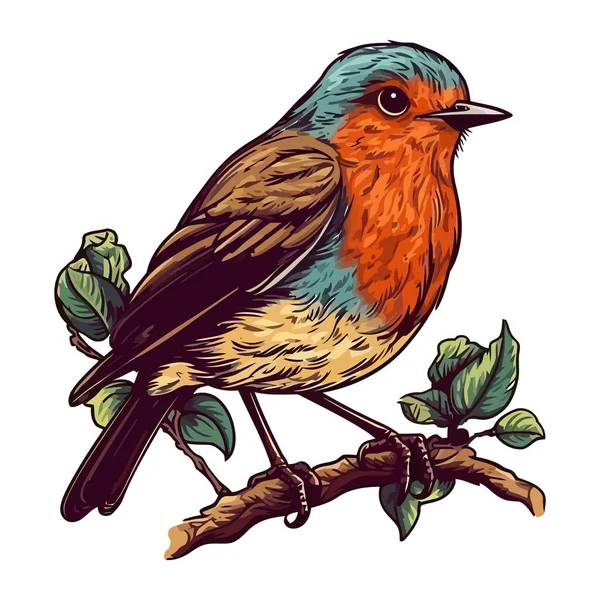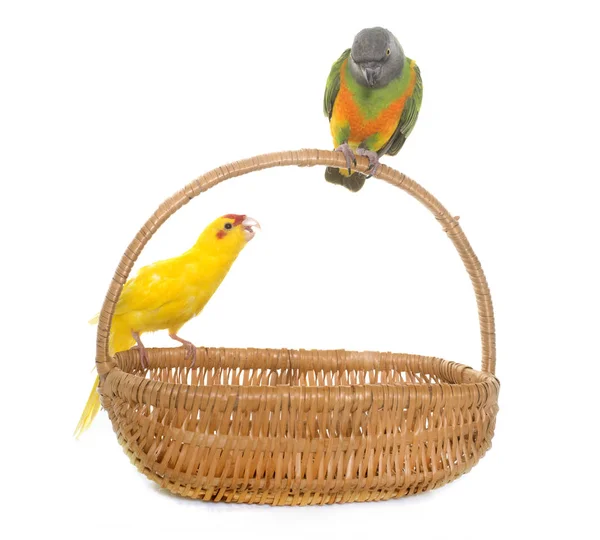When do hummingbirds bid their farewell to the Palmetto State? Join us on a journey through time and wings, as we unravel the mystique of when these tiny, iridescent creatures take flight, leaving behind a memory as fleeting as their delicate flutter.

When Do Hummingbirds Leave South Carolina
Migration Patterns
Come September, South Carolina witnesses a gradual diminution in the hummingbird population. These aerial acrobats embark on an awe-inspiring journey, covering thousands of miles to reach their wintering grounds in Central America. The departure of hummingbirds marks the end of their breeding season, prompting these dexterous creatures to seek more hospitable climates as temperatures start to drop.
Environmental Triggers
The departure of hummingbirds is intricately linked to environmental cues, such as daylight duration and food availability. As daylight wanes and flowers begin to fade, signaling the approach of fall, hummingbirds heed nature’s call to migrate. The diminishing nectar sources and cooler temperatures drive them southward in search of warmth and sustenance.
Preparation for Migration
Before their departure, hummingbirds engage in intense feeding to build up energy reserves for the arduous journey ahead. Observing these energetic birds buzzing around feeders becomes a poignant reminder of the cyclical nature of seasons. Birdwatchers and nature enthusiasts eagerly anticipate the return of these delightful creatures the following spring.
Species of Hummingbirds in South Carolina
Common hummingbird species in the region
South Carolina boasts a vibrant array of hummingbird species, captivating bird enthusiasts with their dazzling plumage and agile flight. Among the most prevalent species are the Ruby-throated Hummingbird, known for its iridescent green feathers and a striking red throat patch.
Additionally, the Rufous Hummingbird graces the region during migration, showcasing its fiery orange and bronze hues. Birdwatchers and nature lovers often express awe at the sight of these delicate creatures flitting among the flowers.
Notable characteristics and behaviors of South Carolina hummingbirds
The hummingbirds of South Carolina exhibit a fascinating array of characteristics and behaviors that captivate observers. These diminutive avians are renowned for their incredible hovering ability, a spectacle that leaves onlookers marveling at their agility. Their rapid, synchronized wing beats and acrobatic mid-air maneuvers add to the allure.
Gardeners frequently describe the hummingbirds’ role as pollinators, enhancing the region’s biodiversity. Residents often share tales of these tiny, iridescent marvels engaging in territorial displays, creating a delightful spectacle in the lush landscapes of South Carolina.
Hummingbird Migration Patterns
General patterns of hummingbird migration
Unlocking the mysteries of hummingbird migration reveals a remarkable journey undertaken by these enchanting creatures. These tiny travelers embark on epic journeys, covering thousands of miles as they traverse continents in search of optimal breeding and feeding grounds. Birdwatchers often marvel at the precision and innate navigational skills displayed by these aerial marvels during their migratory flights.
South Carolina as a crucial stopover location
Nestled in the intricate web of hummingbird migration routes, South Carolina emerges as a vital pitstop for these delicate voyagers. Gardeners and bird enthusiasts eagerly anticipate the arrival of migratory hummingbirds in the region, recognizing it as a pivotal moment in the avian calendar. The state’s lush landscapes and abundance of nectar-rich flowers make it an inviting haven, earning it a reputation as a key refueling station for hummingbirds on their remarkable journey.
Role of weather patterns in migration
The choreography of hummingbird migration is intricately choreographed by the rhythm of weather patterns. Meteorological nuances such as wind currents and temperature fluctuations play a crucial role in guiding these tiny travelers on their migratory paths. Enthusiasts often discuss the impact of climate changes on migration patterns, underscoring the delicate balance between environmental cues and the hummingbirds’ innate instincts.
Understanding these weather dynamics enhances our appreciation of the awe-inspiring phenomenon that is hummingbird migration.
Factors Influencing Hummingbird Departure
Photoperiod and its impact on hummingbird behavior
The rhythmic dance of hummingbird departure is intricately choreographed by the changing canvas of daylight. Bird enthusiasts often ponder the role of photoperiod, the duration of daily sunlight, as a catalyst for hummingbirds’ behavioral shifts. As the days shorten, signaling seasonal transitions, these tiny marvels respond with an instinctual awareness that heralds their departure to new destinations.
Availability of food sources
The hummingbird’s departure from its current habitat is a finely tuned response to the ebb and flow of available food sources. Gardeners and nature lovers recognize the pivotal role of blooming flowers and abundant nectar in sustaining these vibrant birds. As the seasonal banquet of flowers diminishes, hummingbirds, ever attuned to nature’s culinary cues, embark on journeys to discover fresh havens of nourishment.
Climate and weather conditions
The symphony of climate and weather conditions orchestrates the hummingbird’s departure, creating a dynamic interplay that resonates with environmental rhythms. Residents often note the influence of temperature variations, wind patterns, and atmospheric pressures on these aerial nomads. It’s a delicate ballet where the hummingbirds respond to the cues of nature, ensuring their migration aligns harmoniously with the changing climatic tempo.
Environmental cues triggering migration
In the intricate tapestry of nature, environmental cues emerge as silent orchestrators, prompting the hummingbird’s departure with a graceful choreography. Birdwatchers and scientists alike delve into the subtle triggers, ranging from magnetic fields to celestial phenomena, that stimulate the migratory instincts of these tiny avian wonders. Understanding these nuanced cues adds a layer of appreciation to the marvel of hummingbird migration, a phenomenon guided by the whispers of the natural world.
Species of Hummingbirds in South Carolina
Common hummingbird species in the region
South Carolina boasts a vibrant array of hummingbird species, captivating bird enthusiasts with their dazzling plumage and agile flight. Among the most prevalent species are the Ruby-throated Hummingbird, known for its iridescent green feathers and a striking red throat patch. Additionally, the Rufous Hummingbird graces the region during migration, showcasing its fiery orange and bronze hues. Birdwatchers and nature lovers often express awe at the sight of these delicate creatures flitting among the flowers.
Notable characteristics and behaviors of South Carolina hummingbirds
The hummingbirds of South Carolina exhibit a fascinating array of characteristics and behaviors that captivate observers. These diminutive avians are renowned for their incredible hovering ability, a spectacle that leaves onlookers marveling at their agility. Their rapid, synchronized wing beats and acrobatic mid-air maneuvers add to the allure. Gardeners frequently describe the hummingbirds’ role as pollinators, enhancing the region’s biodiversity. Residents often share tales of these tiny, iridescent marvels engaging in territorial displays, creating a delightful spectacle in the lush landscapes of South Carolina.
Hummingbird Migration Patterns
General patterns of hummingbird migration
Unlocking the mysteries of hummingbird migration reveals a remarkable journey undertaken by these enchanting creatures. These tiny travelers embark on epic journeys, covering thousands of miles as they traverse continents in search of optimal breeding and feeding grounds. Birdwatchers often marvel at the precision and innate navigational skills displayed by these aerial marvels during their migratory flights.
South Carolina as a crucial stopover location
Nestled in the intricate web of hummingbird migration routes, South Carolina emerges as a vital pitstop for these delicate voyagers. Gardeners and bird enthusiasts eagerly anticipate the arrival of migratory hummingbirds in the region, recognizing it as a pivotal moment in the avian calendar. The state’s lush landscapes and abundance of nectar-rich flowers make it an inviting haven, earning it a reputation as a key refueling station for hummingbirds on their remarkable journey.
Role of weather patterns in migration
The choreography of hummingbird migration is intricately choreographed by the rhythm of weather patterns. Meteorological nuances such as wind currents and temperature fluctuations play a crucial role in guiding these tiny travelers on their migratory paths.
Enthusiasts often discuss the impact of climate changes on migration patterns, underscoring the delicate balance between environmental cues and the hummingbirds’ innate instincts. Understanding these weather dynamics enhances our appreciation of the awe-inspiring phenomenon that is hummingbird migration.
Factors Influencing Hummingbird Departure
Photoperiod and its impact on hummingbird behavior
The rhythmic dance of hummingbird departure is intricately choreographed by the changing canvas of daylight. Bird enthusiasts often ponder the role of photoperiod, the duration of daily sunlight, as a catalyst for hummingbirds’ behavioral shifts. As the days shorten, signaling seasonal transitions, these tiny marvels respond with an instinctual awareness that heralds their departure to new destinations.
Availability of food sources
The hummingbird’s departure from its current habitat is a finely tuned response to the ebb and flow of available food sources. Gardeners and nature lovers recognize the pivotal role of blooming flowers and abundant nectar in sustaining these vibrant birds. As the seasonal banquet of flowers diminishes, hummingbirds, ever attuned to nature’s culinary cues, embark on journeys to discover fresh havens of nourishment.
Climate and weather conditions
The symphony of climate and weather conditions orchestrates the hummingbird’s departure, creating a dynamic interplay that resonates with environmental rhythms. Residents often note the influence of temperature variations, wind patterns, and atmospheric pressures on these aerial nomads. It’s a delicate ballet where the hummingbirds respond to the cues of nature, ensuring their migration aligns harmoniously with the changing climatic tempo.
Environmental cues triggering migration
In the intricate tapestry of nature, environmental cues emerge as silent orchestrators, prompting the hummingbird’s departure with a graceful choreography. Birdwatchers and scientists alike delve into the subtle triggers, ranging from magnetic fields to celestial phenomena, that stimulate the migratory instincts of these tiny avian wonders.
Understanding these nuanced cues adds a layer of appreciation to the marvel of hummingbird migration, a phenomenon guided by the whispers of the natural world.
Timing of Hummingbird Departure in South Carolina
Historical data and trends
Delving into the annals of birdwatching, enthusiasts often explore the rich tapestry of historical data to unravel the timing of hummingbird departure in South Carolina. Time-honored observations and meticulous records unveil intriguing patterns, allowing birders to trace the cyclical rhythm of these vibrant avian departures. Historical insights provide a valuable lens through which to comprehend the nuances of this annual phenomenon.
Seasonal variations in departure times
The timing of hummingbird departure in South Carolina unfolds as a seasonal ballet, a dance choreographed by the ever-changing rhythms of nature. Residents and bird lovers eagerly anticipate the subtle shifts in departure times, marking the transitions between seasons.
Observing the nuanced variations in migration timing adds a layer of anticipation to the natural spectacle, punctuating the calendar with the delicate comings and goings of these miniature aerial wonders.
Impact of climate change on migration timing
In the contemporary narrative of hummingbird departure, the specter of climate change emerges as a poignant subplot. Conversations among environmentalists and nature enthusiasts echo concerns about the discernible impact of climate change on the timing of migration.
Observations of altered departure patterns prompt discussions about the delicate balance between nature’s course and the evolving influence of climatic shifts, underscoring the importance of preserving habitats in the face of environmental change.
Preparation for Hummingbird Departure
Behavioral changes in hummingbirds leading up to migration
As the anticipation of departure permeates the air, avid birdwatchers keenly observe the subtle behavioral shifts in hummingbirds. The prelude to migration unveils a choreography of restlessness and heightened activity.
Enthusiasts often describe these avian acrobats engaging in fervent aerial displays, signaling an imminent departure that adds a sense of wonder to the natural spectacle.
Increased feeding and energy storage
In the hummingbird’s meticulous preparation for departure, a crescendo of feeding activity ensues, reminiscent of a culinary prelude to a grand journey. Gardeners and nature aficionados revel in the sights of these tiny dynamos frenetically sipping nectar, voraciously fueling their bodies for the impending migratory adventure.
The increased energy storage becomes a vital strategy, ensuring they have the stamina to navigate the skies during their awe-inspiring journey.
Observation and monitoring techniques for tracking departure
The art of tracking hummingbird departure becomes an engaging pursuit for bird enthusiasts armed with observation techniques. Binoculars in hand, they attentively monitor the comings and goings of these feathered sprites. Technological aids, such as specialized cameras and monitoring apps, are wielded to capture and document the nuanced moments leading up to departure.
As the departure date draws near, the air becomes charged with anticipation, and the meticulous observations become a testament to the skillful art of tracking the hummingbird’s farewell.
Conservation and Citizen Science
Importance of tracking hummingbird migration for conservation
In the intricate tapestry of wildlife conservation, tracking hummingbird migration emerges as a crucial thread. Environmentalists and conservationists underscore the significance of understanding and monitoring these delicate journeys.
The data gleaned from tracking hummingbird migrations serves as a compass guiding conservation efforts, enabling scientists to identify critical habitats, migration corridors, and potential threats to these iridescent avian wanderers.
Involvement of citizen scientists in monitoring departure
A vibrant symphony of conservation unfolds as citizen scientists enthusiastically join the ranks of guardians for hummingbird departure. Embracing binoculars and a spirit of curiosity, individuals from all walks of life actively contribute to monitoring these aerial travelers.
Their involvement transforms the act of tracking departures into a collective effort, amplifying the impact of conservation initiatives and fostering a sense of shared responsibility for the welfare of these enchanting creatures.
Educational initiatives to raise awareness about hummingbird migration
Educational endeavors take flight as organizations and enthusiasts strive to raise awareness about the marvels of hummingbird migration. Outreach programs, workshops, and online campaigns become vehicles for disseminating knowledge about the importance of these journeys.
The shared stories of these winged wonders captivate audiences, fostering a deep appreciation for the delicate balance between nature’s wonders and the human role in safeguarding the habitats that sustain these tiny, vibrant travelers.

FAQs
When do hummingbirds leave South Carolina?
What is the typical migration pattern of hummingbirds in South Carolina?
Hummingbirds in South Carolina usually begin their migration in the fall, typically around September.
Why do hummingbirds leave South Carolina?
What triggers the departure of hummingbirds from South Carolina?
Hummingbirds leave South Carolina as part of their instinctual migration to warmer climates in the south to avoid the colder winter temperatures.
How long do hummingbirds stay in South Carolina before leaving?
What is the duration of time hummingbirds spend in South Carolina during their migration?
Hummingbirds may stay in South Carolina for several months during the warmer seasons, but their departure typically occurs in the fall, around September.
Do all hummingbirds leave South Carolina at the same time?
Is there a specific timeframe when hummingbirds collectively leave South Carolina, or is it a gradual process?
Hummingbirds don’t leave South Carolina all at once. The departure is a gradual process that can span over several weeks, with individual birds choosing their optimal time to migrate.
What factors influence the timing of hummingbirds leaving South Carolina?
Are there environmental or biological factors that affect when hummingbirds decide to leave South Carolina?
Various factors, including changes in daylight, temperature, and food availability, influence the timing of hummingbirds’ departure from South Carolina.
Is there a way to predict when hummingbirds will leave South Carolina each year?
Can one anticipate the departure of hummingbirds from South Carolina, or is it unpredictable?
While there are general patterns, predicting the exact timing of hummingbirds leaving South Carolina each year can be challenging due to the influence of multiple factors.

Conclusion
In conclusion, the departure of hummingbirds from South Carolina marks a fascinating natural phenomenon that is intricately linked to the changing seasons. As these delicate creatures embark on their migratory journey, they remind us of the dynamic rhythms of nature and the importance of adapting to environmental shifts.
The timing of their departure, influenced by factors such as daylight duration and food availability, serves as a poignant reminder of the interconnectedness of all living beings with the world around them. Observing the departure of hummingbirds from South Carolina not only enriches our understanding of avian behavior but also deepens our appreciation for the intricate tapestry of life that unfolds in the natural world.